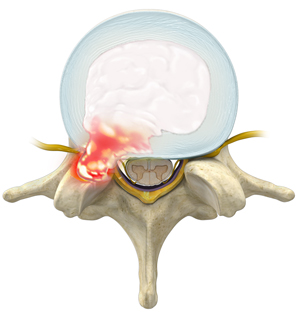

This is more commonly known as disc degeneration. In most cases, a herniated disc is caused by natural wear and tear. When this happens, it can cause pain and weakness in the patient’s arms or legs.
#Little disc herniated full#
The purpose of intervertebral discs is to help the spine absorb impacts, and to bend and flex so that we have full range of movement.Ī herniated disc occurs when some of the soft, inner gel manages to push through a crack or tear in the tougher, fibrous layer. These discs are small, round and comprise of a tough, outer ring of fibrous bands and a soft inner gel. Our spine is usually made up of 33 vertebrae, between each of which is a single intervertebral disc. In some severe cases of lumbar lordosis, the mobility of the patient may also be affected. This additional strain can also cause the discs in the spine to degenerate more quickly than usual. The principle effect of lumbar lordosis is chronic discomfort and lower back pain as a result of the excess pressure on the spine. These include being significantly overweight, and suffering from the following conditions: While lordosis can affect patients of any gender, age or ethnicity, there are a few factors that can increase the likelihood that you may develop the condition. However, it is most commonly experienced in the lower back, also known as the lumbar. Lordosis can occur in both the lower back and neck. This is known as lordosis and can place superfluous pressure on the spine. Unfortunately, some people find that their curve arches too far inwards. help absorb impacts so that our spine doesn’t break enable us to move and bend in a range of motions

These curves are known as the lordotic curve, and they have several functions. Instead, it has a slight ‘S’ shape, curving a little at the top and bottom. Most people realise that their spine is not straight.


 0 kommentar(er)
0 kommentar(er)
